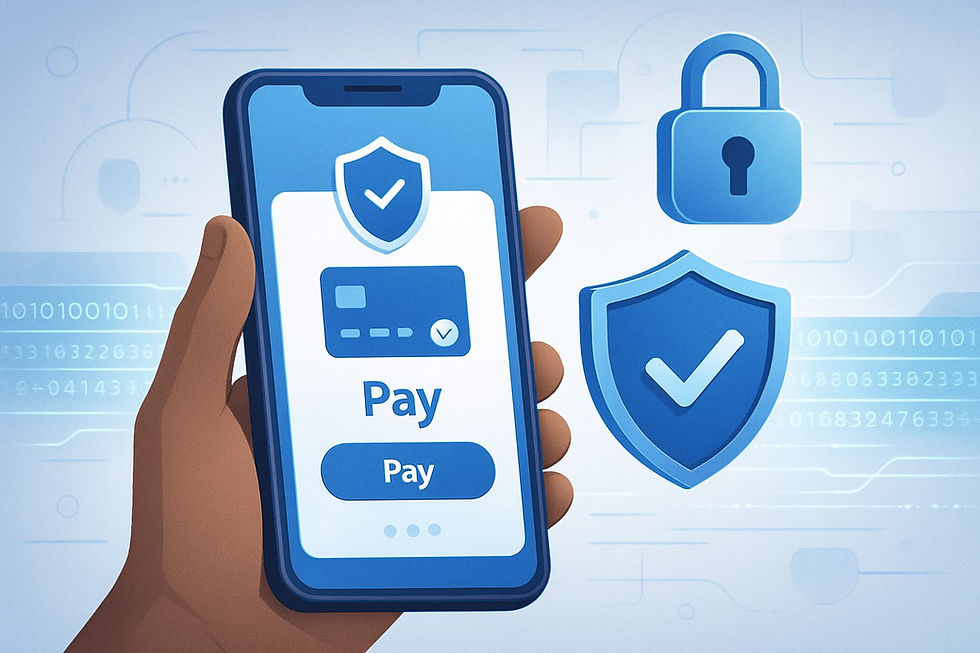Is Venmo Safe? Security, Risks, and How to Protect Yourself from Fraud
- The Master Sensei

- Sep 19
- 5 min read
Millions of people use Venmo to split dinner bills, pay rent, and send money to friends. Still, plenty of folks wonder if their financial info is actually safe on the app. Venmo’s pretty safe if you use it wisely, thanks to things like encryption and identity checks, but there’s always some risk—scams and account breaches do happen.

The app packs in several protections to keep your money and data locked down. Data encryption, privacy settings you can tweak, and fraud monitoring all work together behind the scenes. But let’s be real—no digital payment platform is 100% safe, and Venmo’s had its share of security complaints and privacy debates.
If you know Venmo’s strengths and its weak spots, you can make smarter choices about how you use it.
How Safe Is Venmo? Core Security Features and Privacy Controls
Venmo uses encryption and identity checks to protect your account and financial data. You can set up multi-factor authentication and control your privacy, but purchase protection comes with some caveats.
Venmo Security Technologies and Data Encryption
Venmo encrypts all transactions and your stored financial info. This protects your personal details whether you’re paying a friend or buying something online.
Since Venmo is part of PayPal, it follows industry security standards. The company keeps updating its tech to keep transactions secure.
Some of the main encryption features:
Encrypts every payment you send or receive
Protects your personal and financial data
Hides card and account numbers during online shopping
Never shares your financial info with merchants
The app also watches for suspicious activity. Their fraud monitoring works alongside encryption to catch threats before they bite.
Multi-Factor Authentication and Account Protections
Venmo lets you use more than just a password. You can set up fingerprint or face ID, or use a PIN for extra safety.
Authentication options include:
Two-factor authentication (2FA) for logging in
Biometric security like fingerprints or face recognition
PIN codes if you don’t want to use biometrics
Phone verification when you pay someone new
Federal law requires every Venmo user to verify their identity. This step helps block scams and keeps strangers out of your account. Venmo encrypts these details, too.
When you pay a new person, Venmo asks you to verify their phone number. This makes sure your money goes to the right person and not some random stranger.
Privacy Settings for Transaction Visibility
Venmo’s privacy settings let you decide who sees your payment activity. By default, your transactions are public—which is kind of weird, honestly—but you can change that.
Privacy options:
Public: Anyone can see your payments and notes
Friends only: Only your Venmo contacts see your activity
Private: No one else can see your transactions
You can adjust privacy for each payment or set a new default for all future ones. The app also lets you sync contacts to find friends, but you stay in control of what’s visible.
You can edit or hide payment notes to match your privacy comfort level. It pays to check your privacy settings now and then—Venmo doesn’t always make them obvious.
Venmo Purchase Protection Limitations
Venmo’s purchase protection only covers certain transactions—specifically, when you mark a payment as a purchase. It won’t help if you’re just paying a friend or sending money to family.
What’s covered:
Buying merchandise from businesses
Paying for services from approved merchants
Payments marked as "purchases" in the app
What’s NOT covered:
Sending money to friends or family
Cash advances or money transfers
Buying prohibited items
Payments not marked as purchases
You have to turn on the purchase indicator in the app to get protection. If you forget, you’re out of luck.
This protection helps with unauthorized transactions and missing items, but you really need to read the fine print before assuming you’re covered for everything.

Common Venmo Risks and How to Safeguard Your Account
Even with security features, Venmo users deal with real threats. Scams, phishing attacks, and the risk of data breaches are all part of the landscape.
Scams and Social Engineering Tactics
Scammers love Venmo. They use emotional tricks and fake emergencies to target people. The “accidental payment” scam pops up a lot—a stranger sends you money, then claims it was a mistake and asks for it back.
If you send the money back, the original payment gets reversed (since it came from a stolen card). You end up losing your own money, and the scammer walks away with both payments.
Sometimes scammers pretend to be your friends or relatives and ask for urgent cash for things like car trouble or medical bills.
There’s also the overpayment scam. Someone buying your stuff sends too much money, then asks for the extra back. Later, the whole payment vanishes when fraud gets flagged.
How to avoid these scams:
Only send money to people you actually know
Double-check weird requests by calling or talking in person
Don’t return “accidental” payments from strangers—ever
Report anything sketchy to Venmo right away
Phishing Attacks and Fake Payment Requests
Phishing attacks have gotten sneakier. Scammers send emails or texts that look like they’re from Venmo.
These messages warn about account problems or security issues and include links to fake Venmo login pages.
If you type in your info, scammers grab your username and password. They can then drain your Venmo balance or even your linked bank account.
Red flags for Venmo phishing:
Messages claiming your account’s about to be shut down
Links that don’t actually go to venmo.com
Requests for your password or PIN
Awkward wording or typos in “official” emails
How to protect yourself:
Go straight to the Venmo app—don’t click links in emails or texts
Turn on two-factor authentication for more security
Use strong, unique passwords (don’t reuse them across sites)
Always check website addresses before logging in
Identity Theft and Data Breaches
When financial companies suffer data breaches, your personal info can end up in the wrong hands—identity theft is a real threat. Sure, Venmo encrypts things, but let's be honest, no payment app is immune to cybersecurity risks.
Criminals get creative with stolen data. They might open fake accounts, run up charges, or just sell your info on the dark web. If your Venmo transactions are public, you could be giving away more than you think—details about your spending, your friends, maybe even your routines.

Identity theft risks include:
Social security numbers swiped during breaches
Bank account info from linked payment sources
Personal tidbits shared in transaction notes
Location clues from your payment patterns
Ways to protect yourself:
Make every transaction private—seriously, don’t leave them public
Check your bank and credit card statements often
Try a credit monitoring service to catch new accounts
Keep your Venmo balance low; move money to your bank quickly
Look over your transaction history each week for anything weird
Using strong passwords, setting your account to private, and keeping an eye on things can go a long way to keeping payment app threats at bay.
















































Comments